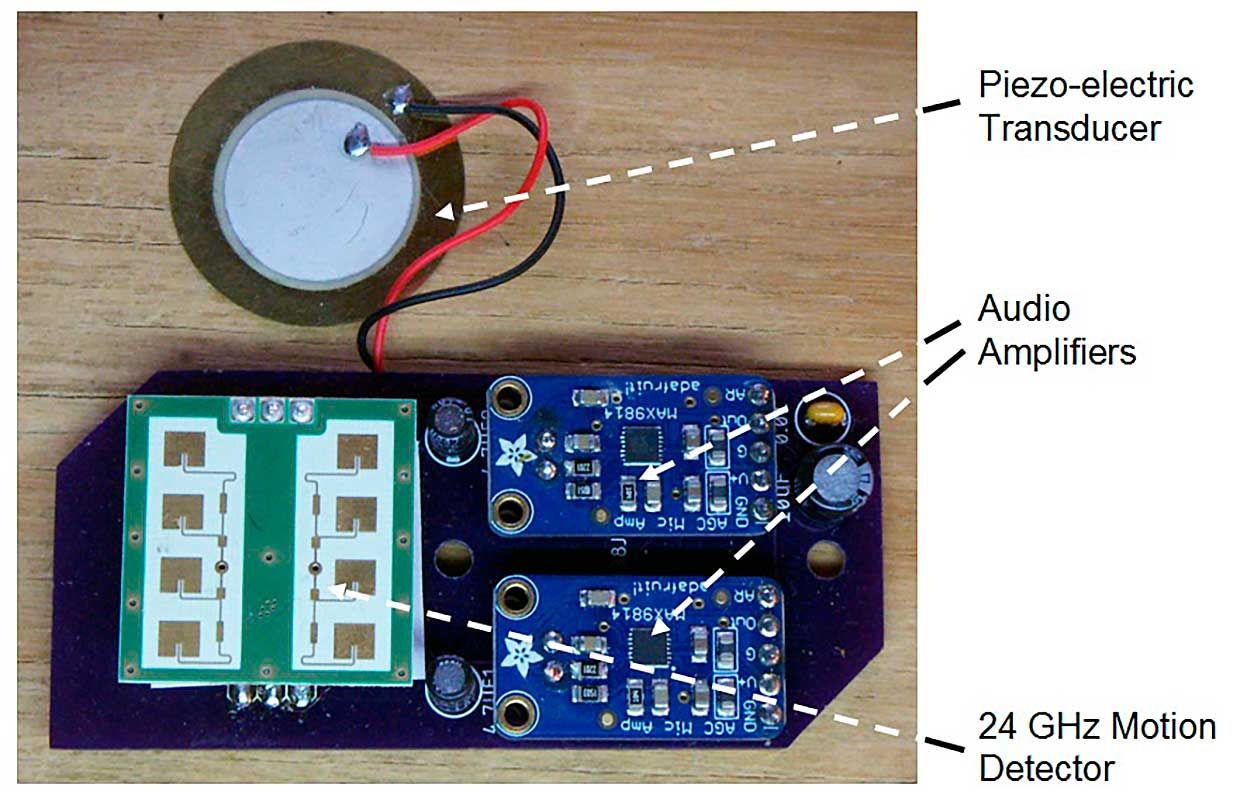Radar-Piezoelectric Tech Tracks Hive Mind—of Bees
A bee's life is not just about producing honey-it can involve seeking a new home or defending the hive from intruders. Such migrations and territorial battles can affect honey supply, thus concerning beekeepers. But keeping track of these events can be difficult without maintaining a constant presence.
To better monitor his bees from afar, one casual beekeeper and experienced engineer sought to create a new, low-cost monitoring system that uses sound waves to track bee activity outside the hive, while using vibrational measurements to track activity within the hive. The novel solution is described in a study published last month in IEEE Sensors Letters.
About ten years ago, Herbert Aumann moved to a farm in Maine, and a neighbor offered to put a beehive in his apple orchard to help with pollination. Being new to beekeeping and not wanting to get
stung, I keep a respectful distance from the beehive," Aumann says.
But as someone who is often working in his home office, Aumann wanted a way to monitor the hives remotely. There are, he says, two critical times when a beekeeper may want to be alerted to bee activity, so they can intervene-swarming and robbing.
Swarming events are when roughly half of a bee population within a hive leave to establish a new colony. In a rapid frenzy, the fleeing swarm of bees initially forms a tight cluster just outside the hive-often very briefly-before flying off to its final destination. Beekeepers must act quickly, lest the beekeepers lose their bees-and subsequently their honey supply.
During a robbing event, bees from a stronger hive attack those in a weaker one, stealing their honey. A beekeeper can help by sealing off the entrance of the hive. If the beekeeper does not interfere, the weaker hive will be cleaned out of all honey within days," says Aumann.
Listen to an audio clip of bee doppler radar soundsAumann has spent decades working as a radar engineer at MIT, so naturally he wondered about using radar to monitor his bees. Since I had spent my career building radar systems for tracking small targets, I thought I could use a low-powered radar to observe bees from maybe ten feet away. Indeed I could," he says. Amazingly, the signals that the radar picked up could be turned into an acoustic signal that sounded exactly like the signal you would hear standing next to the beehive."
He decided to combine an off-the-shelf 24-Gigahertz Doppler radar sensor and piezoelectric transducer.
Whereas the piezoelectric transducer faces into the hive, to monitor the vibrational pitter patter of thousands of little bees within, the radar sensor faces outward, to monitor the coming and going of bees near the hive entrance. The system is aptly named Janus, after the god of Roman mythology who is usually pictured with two faces, one looking forward and one looking backward. The sensors are hooked up to a microprocessor, which sends the data wirelessly to Aumann's laptop.

Next, Aumann created a scenario whereby he could test the system. Normally, attentive beekeepers will notice when a hive is getting crowded, and they'll pre-emptively split a hive. In violation of good beekeeping, I did not split one hive," Aumann says. And indeed, it swarmed-five times!"
Upon receiving alerts, he was able to stop the swarming from happening four out of five times. (On one occasion, the swarming happened during his lunch and ended by the time he arrived on-site.) Notably, some false alarms occurred when he used just the radar sensor, but the vibrational data help better confirm when a true swarming event was occurring.
While video monitoring systems for beehives exist, Aumann says these tend to be expensive. We have demonstrated that the radar sensor performance is equivalent to the commercial video monitor, but it is considerably less expensive and less intrusive," he says.
 Image: Herbert Aumann Hive radar and vibration data captured by Janus
Image: Herbert Aumann Hive radar and vibration data captured by Janus In pursuing commercialization of Janus, Aumann has established a start up company (MaineBiosensors LLC) and filed a patent through the University of Maine (where he is currently an Adjunct Professor of Electrical and Computer
Engineering). To improve upon the system, he wants to calibrate it better to account for different environmental factors, which strongly influence bee activity. He also hopes to adapt the platform so that it can be connected to the Internet and apps.